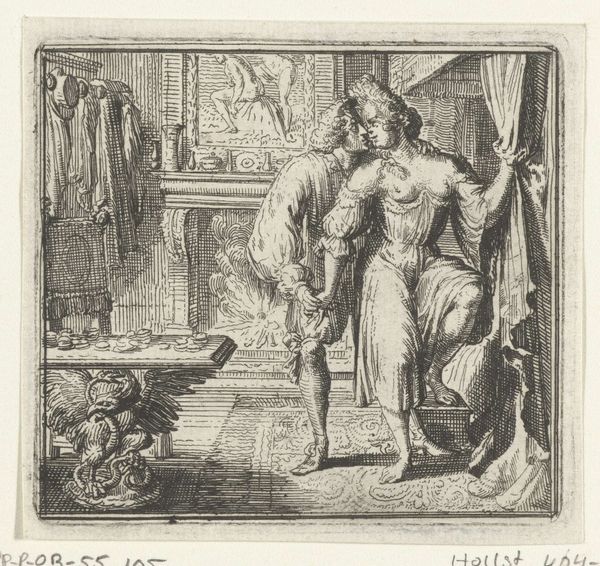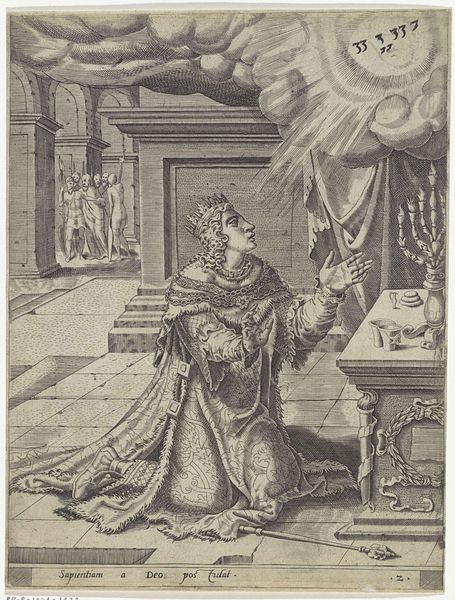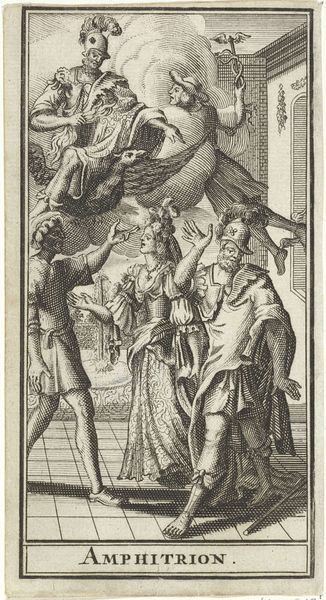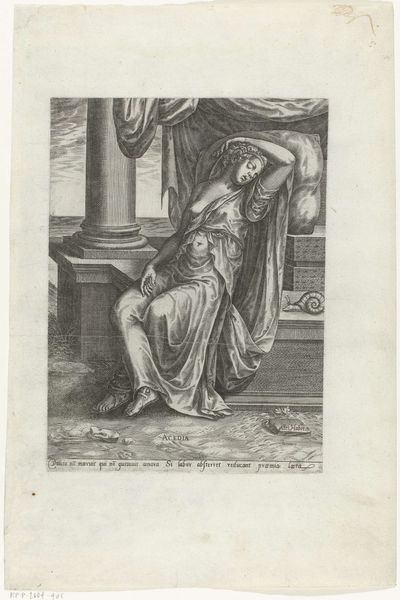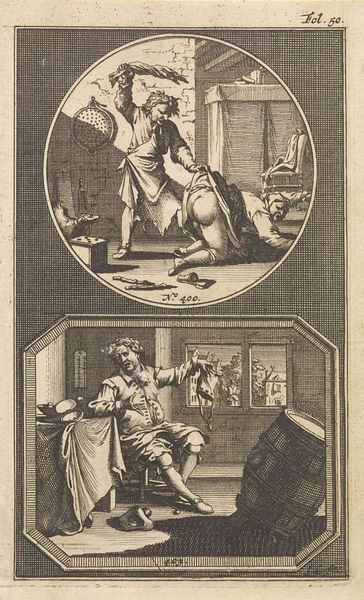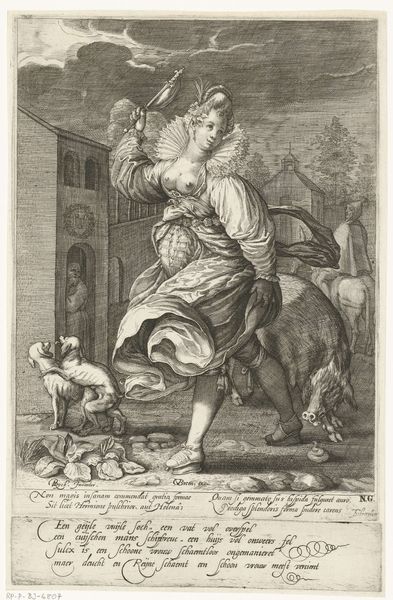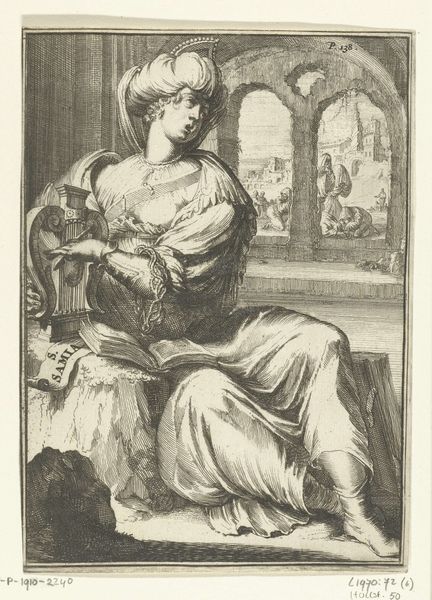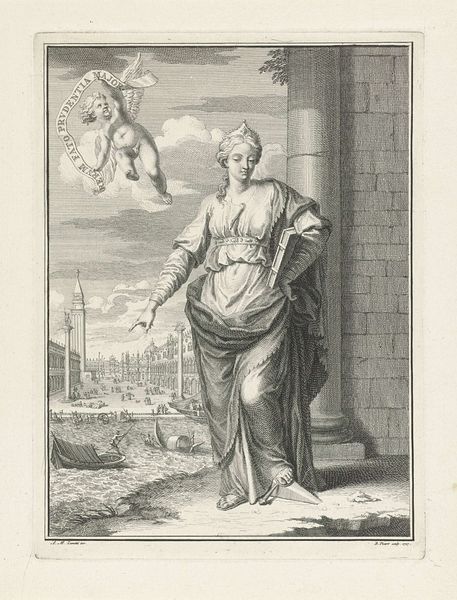
print, engraving
#
allegory
# print
#
mannerism
#
history-painting
#
engraving
Dimensions: height 177 mm, width 138 mm
Copyright: Rijks Museum: Open Domain
Curator: This is “Het element vuur,” or “The Element of Fire,” an engraving made between 1595 and 1597 by Zacharias Dolendo. The piece, currently residing at the Rijksmuseum, presents us with an allegorical figure representing fire. Editor: Whoa, this feels like stepping into a strange, smoky dream. There's this strong female figure, almost like a Roman goddess, but then there's… is that a seal on the table next to a knife? It's intense, slightly unsettling. Curator: The seal, and the salamander she’s holding, are both classical symbols associated with the element of fire, referring to the destructive capacity of the fire. Dolendo masterfully employs mannerist aesthetics. Consider how the elongated forms, stylized poses, and the compressed perspective heighten the symbolic tension. Editor: Mannerist, yeah, that feels right. It's not quite real, is it? More like an idea of fire, fierce, unpredictable. She has such confidence. It feels almost staged but powerful at the same time. But it’s also grotesque – a sort of beauty in destruction. I'm definitely drawn to the almost nonchalant cruelty in the setting, here. What else should we know about the technical aspects of this engraving, for instance? Curator: As an engraving, the stark contrasts are critical. The medium allows for meticulously detailed cross-hatching to simulate shading, volume, and depth, creating a dramatic play of light and shadow that directs the eye throughout the composition, engaging classical symbolism but challenging it nonetheless. The piece suggests how classical approaches to understanding nature, science, and the physical world are shifting as it blends into other aesthetic principles. Editor: I’d say the longer I stare at it, the stranger it gets, like one of those half-remembered nightmares from childhood – a little dangerous, a little surreal, and yet… beautiful. I almost wish it would scorch me. It looks so forbidden. Curator: An apt way of summing up a symbolic exploration into the transformative nature of fire. A complex interplay between classical ideals and burgeoning Mannerist aesthetics. Editor: It's sparked something here. Thank you!
Comments
No comments
Be the first to comment and join the conversation on the ultimate creative platform.
